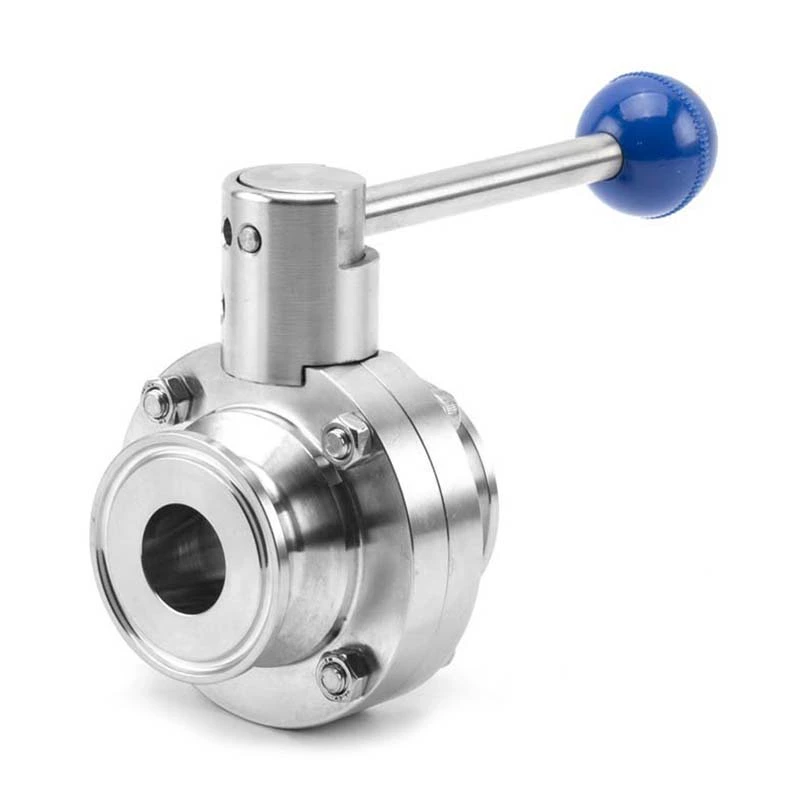Stainless Steel Quick-install Butterfly Valves Require A Full Understanding Of Their Structural Characteristics And Maintenance Cycles.
Sanitary Butterfly Valve is a valve commonly used in pipeline systems to control parameters such as temperature, pressure and flow of fluids. It has the advantages of simple structure, light weight, good sealing and wear resistance, and is widely used in chemical, pharmaceutical, food processing and other industries. This article will introduce the technical characteristics of stainless steel quick-install butterfly valves and the issues that need to be paid attention to in practical applications.
I. Technical characteristics
1. Compact structure: Compared with traditional ball valves and gate valves, stainless steel quick-install butterfly valves have a more compact structure and can save pipeline space.
2. Flexible operation: Due to the use of gear transmission or handle operating mechanism, the opening and closing operation follow-up speed can be adjusted independently, which greatly improves production efficiency and reduces labor intensity.
3. Stable sealing performance: A two-way sealing design scheme is adopted, and high elastic materials are selected as sealing ring materials to ensure good sealing performance.
4. Able to withstand high horizontal pressure difference: Compared with other types of pipeline connectors, this butterfly connection method is very strong and suitable for use under high horizontal pressure difference.
5. Strong corrosion resistance: The stainless steel material makes the valve have high corrosion resistance and is suitable for chemical media such as acids, alkalis, and salts.
2. Application precautions
1. Pre-installation inspection: First of all, the stainless steel quick-install butterfly valve to be installed must be strictly inspected, including appearance, whether the seal is damaged, and whether the connection parts are tight. At the same time, it is necessary to ensure that there are no obstacles between the upstream and downstream pipelines and the valve during installation.
2. Vertical installation: In order to ensure that the fluid passes smoothly through the quick-install reflector during movement, it is recommended to place the device vertically to avoid fluid accumulation and affect the normal operation of the system.
3. Maintenance cycle: Regular maintenance is a necessary measure, and corresponding plans can be made according to actual usage. Generally, comprehensive maintenance and cleaning are carried out at least once every six months or a year, and the sealing ring and other vulnerable parts are replaced as needed.
4. Temperature and pressure limits: There are differences in the design parameters of stainless steel quick connectors of different models and brands. Therefore, when choosing, users should base their selection on the maximum temperature and pressure that the pipeline system can withstand, and the specific requirements can be adjusted according to actual conditions.
In short, as an efficient and reliable flow control device, stainless steel quick-install butterfly valves are increasingly widely used in industrial production. Before it is officially put into use, you need to have a full understanding of its structural characteristics and maintenance cycle, and follow the relevant installation steps and precautions to ensure its stability and work efficiency.
